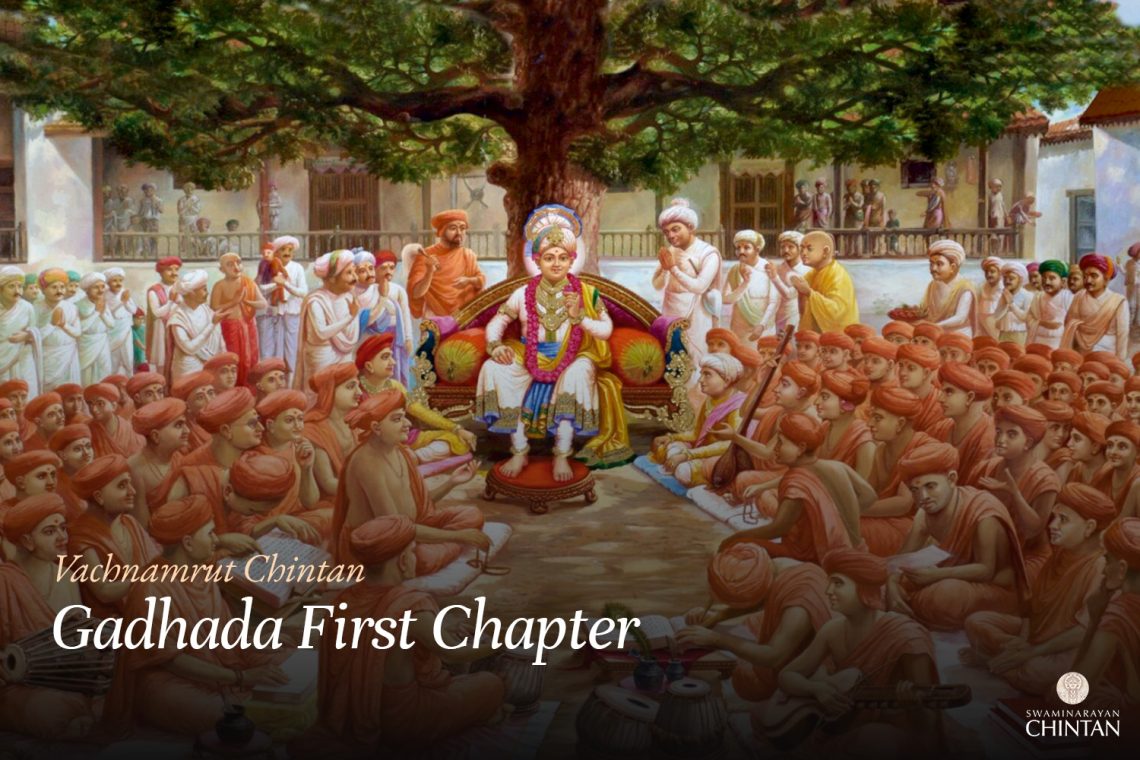Central Insights:
The importance of understanding the forms of Purush (the supreme person), Prakriti (nature), Kāl (time), the elements, and the divine abode of God.
Key Points:
- To attain liberation, one must understand the twenty-four elements within the body.
Explanation
In this Vachanamrut, Shriji Maharaj explains that when one understands the forms of Purush, Prakriti, Kāl, and the twenty-four elements such as Mahattattva, they can free themselves from the bondage caused by ignorance and the actions of these twenty-four elements. Muktanand Swami then asked, “Maharaj, how can one understand their forms?” Maharaj replied that by knowing their characteristics, one can understand their forms. Knowing the twenty-four elements within one’s body removes their bondage. These elements bind the soul. Therefore, while understanding the elements of the universe is beneficial, liberation can only be achieved by recognizing one’s own elements.
To understand the forms of these elements, Maharaj emphasizes the importance of knowing their characteristics. By understanding their characteristics, one can identify the elements. In this Vachanamrut, the functional characteristics of all the elements are described. Maharaj explains what these elements do within our body. The characteristics are described in terms of their functions rather than their inherent properties such as sattva, rajas, and tamas. Understanding how these elements impact our consciousness can help remove their bondage. Maharaj also highlights the importance of knowing the flaws of these elements to achieve liberation. The purpose of knowledge of elements or Sankhya knowledge is to realize the flaws within these elements. He said, विद्वान्विपश्चिद्दोषज्ञः “Vidvān vipashcit doṣajña” (only the wise recognize the flaws). This same point is mentioned by Maharaj in Vach.Vad.17. Therefore, recognizing flaws in the elements is essential for true understanding.
Glossary
| Kal – Time One of the instruments used by Bhagwan for the functioning of the world. However, time is not the ultimate cause—God is beyond and the controller of kal. |
| Mahattattva – One of the 24 elements explained in Sankhya philosophy, representing the cosmic intelligence. It emerges after Pradhan Purush. |
| Prakriti – Primordial matter; source of creation The base material cause of the universe; from prakrti, the 24 elements evolve. One must deeply understand prakrti to develop detachment from worldly pleasures. |
| Purush – Cosmic Being A concept in spiritual philosophy referring to the supreme being or universal soul that is the source of creation. |
| Sankhya Knowledge – Philosophical knowledge of the 24 elements A system of philosophy that explains the nature of reality through the twenty-four elements. |
| Vachanamrut – Scriptural text containing Bhagwan Swaminarayan’s Teachings A sacred scripture that contains Bhagwan Swaminarayan’s discourses and teachings, offering guidance on spiritual practices, devotion, and moral living. |
| Vidvān vipashcit doṣajña – A wise, insightful person who recognizes faults A person with refined intellect who can distinguish between good and bad, especially in spiritual life. Such a person discards harmful thoughts and chooses spiritual progress. |

